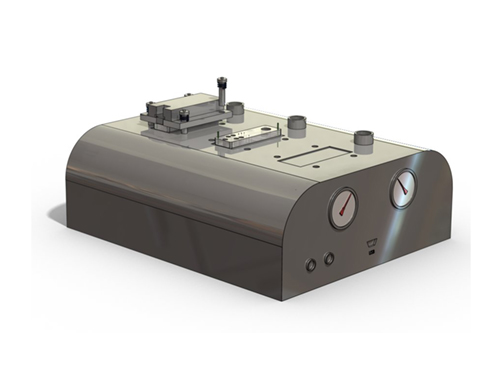Technical Expertise
Chemistry & micro/nanofabrication
- standard semiconductor-fab cleaning protocols
- Reactive Ion Etching processes
- SEM imaging & electron-beam lithography
- photolithography
for lift-off processes
positive photoresists
extensive experience with negative resist SU-8
- PDMS microfluidic fabrication, including
Quake-style push-up & push-down valves
multi-layer with crossover channels
- Silicon surface functionalization
- microcontact printing
- cell culture
Instrument Proficiency
- HP4192A LCR Meter
- Tektronix TDS 520 Oscilloscope
- SR830 Lock-in Amplifier
- SR530 current Preamplifier
- Keithley 2400 Sourcemeter
- NI DAQ board
- PAR VMP2 potentiostat
- FPLC & HPLC
- Westbond Wire Bonder
- Phillips XL30 SEM
- E-beam metal evaporator
- Rapid Thermal Processing
- Karl Suss MA-6
- Dektak 6M Profilometer
- Reactive Ion Etcher
- Nikon Eclipise E800 confocal fluorescence microscope
Computer Skills
Programming proficiency
- basic HTML
- Visual Basic
- NI LabView
- NI LabWindows CVI
- significant experience with c/c++
Software proficiency
- Adobe Photoshop
- Adobe Illustrator
- Origin
- AutoDesk AutoCAD
- LinkCAD
- Solidworks
I have written many pieces of scientific software using the Visual Basic and
LabWindows CVI development environments. These programs are designed to
automate data collection for measurements that would otherwise be prohibitively
tedious, and they frequently integrate multiple instruments in addition to
basic, custom-built electronics. Code samples & program screenshots are
available upon request.
Current Project
I am working on a tool for microfluidics-based point-of-care
diagnostics in the clinical setting. An early demonstration of our microfluidics technology
allowed for massively parallel measurements of protein levels from a single drop of blood: a
key innovation in improving disease diagnostics & treatment. However, the device suffered from
excessively long assay times and required constant attention throughout from experienced
microfluidics technicians, rendering it impractical for use in real studies where hundreds of
such experiments are required. I am building a portable, integrated, USB-based platform that
completely eliminates the need for any technical knowledge of microfluidics, that runs multiple
concurrent instances of the device robustly & asynchronously, that reduces assay readout times
to a reasonable duration (1hr), and that maintains or improves the data fidelity of our initial
demonstration. The concept is to have a single button initiate the entire experiment, so that
other research labs, nurses, or even completely unskilled technicians can perform these
powerful multi-protein diagnostics independantly.

Prior Projects
Biological research in the Heath lab has always focused on a
singular task: to cheaply & reliably measure a large panel of blood-borne proteins.
Collectively, proteins represent the body's molecular toolbox for accomplishing almost any task
necessary, and as such, being able to monitor which particular tools are in use can provide
enormous insight into what issues the body is preoccupied with. As diseases such as malaria,
HIV, cancer, and other disruptive forces impinge on the body's healthy state, a cohort of new
tools/proteins are mobilized to try and deal with them. This natural response occurs long
before the diseases take hold and physical symptoms become manifest; if the response could be
detected at an early stage we can very effectively supplement the body's own fight against such
diseases using existing treatments. Unfortunately, today's technology only allows us to measure
one protein at a time, making the multi-parameter diagnostics required for a comprehensive
analysis prohibitively expensive (in terms of time & money).
Our lab initially focused on an electronic method of measuring
proteins, but the approach proved exceedingly difficult and was unlikely to yield productive
results in the near-term. Subsequently we fell back on a modified version of more traditional
measurement techniques, and have since found that our new methods are bearing significant fruit.
Indeed, we have started to realize our initial goal of cheap, multiparameter blood assays and
are now transitioning into clinical measurements to demonstrate their potential in cancer trials.
Click here to see a list of the projects that I have spearheaded in the course of realizing this
goal.
